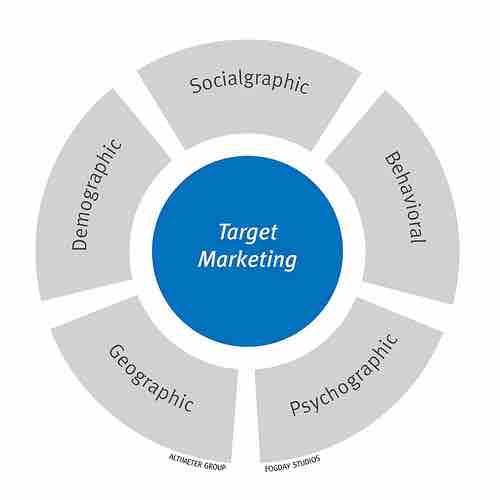Identify the Target Market
Target markets are groups of individuals separated by distinguishable and noticeable aspects.

Target Market
A target market is a group of customers that the business has decided to aim its marketing efforts and ultimately its merchandise toward. A well-defined target market is the first element to a marketing strategy.
Target markets can be separated into:
- Geographic segmentations (address, their location climate region)
- Demographic or socioeconomic segmentation (gender, age, income, occupation, education, household size, and stage in the family life cycle)
- Psychographic segmentation (similar attitudes, values, and lifestyles)
- Behavioral segmentation (occasions, degree of loyalty)
- Product-related segmentation (relationship to a product)
In addition to the above segmentations, market researchers have advocated a needs-based market segmentation approach to identify smaller and better defined target groups. A seven step approach proposed by Roger Best is as follows:
- Select the target audience - The customers are grouped based on similar needs and benefits sought by them through the purchase of a product.
- Identify clusters of similar needs - Demographics, lifestyle, usage behavior and pattern is used to differentiate between segments.
- Apply a valuation approach - Market growth, barriers to entry, market access, and switching is used to valuate segments.
- Test the segments - A segment storyboard is created to test the attractiveness of each segment's positioning strategy.
- Modify marketing mix - The segment positioning strategy is expanded to include all aspects of the marketing mix.
Your Target Market and Your Target Audience Might Differ
In marketing and advertising, a target audience is a specific group of people within the target market at which a product or the marketing message of a product is aimed at. (Kotler 2000).
For example, if a company sells new diet programs for men with heart disease problems (target market) the communication may be aimed at the spouse (target audience) who takes care of the nutrition plan for her husband.
A target audience can be formed of people of a certain age group, gender, or marital status. A combination of factors can also make a target audience, as in the case with men aged 20 to 30. Other groups, although not the main focus, may also be interested.
Discovering the appropriate target market(s) and determining the target audience is one of the most important activities in marketing management. The biggest mistake that it's possible to make in targeting is trying to reach everybody and ending up appealing to no one.